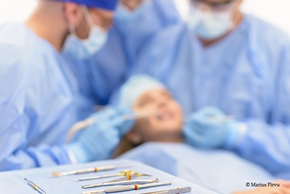Periodontics

Periodontics is the branch of dentistry dealing with prevention, diagnosis and treatment of periodontal disease. The periodontium contains all the hard and soft tissues supporting the teeth, such as the gum, periodontal ligament, root cementum, alveolar bone. Periodontal disease is a bacterial infection that attacks the dental periodontium consisting of: gum, bone, periodontal ligament and root cementum, which are the teeth-supporting tissues. It is caused by the penetration of bacteria into the gingival sulcus.
Main symptoms of periodontitis:
-
Redness of the gums
-
Bleeding
-
Inflammation of the gums
-
Bad breath
-
Shaking teeth
-
Tooth displacement and formation of spaces in-between
Teeth are the only mineralized organs partially exposed to the external environment, which have a suitable surface for the formation of biofilm: a thin layer of bacteria, proteins, carbohydrates and water, which are an ideal environment for the development of many bacterial species. Conversely, the other tissues exposed to the external environment (such as skin) avoid the accumulation of bacteria by exfoliation. On the biofilm bacteria may accumulate and cause the formation of plaque. The first therapeutic objective is definitely that of a correct oral hygiene. This includes professional cleansing, mechanical removal of calculus, gingival curettage, root planing, motivation for maintaining oral hygiene, understanding and applying the correct methods of prevention. Periodontitis, in more serious cases, may require surgery to clean out deeper tissues and, eventually, regenerate the reabsorbed bone.
Periodontitis is a risk factor for those suffering of coronary artery disease. The presence of periodontal pathogens in the carotid artery atheromas is an indication of the risk that the aetiologic agents of parodontopathy reach the heart and coronary arteries, favouring atherosclerosis and thrombosis. In addition, a correlation between premature birth and periodontitis has been found. Diabetes, besides being a risk factor for periodontitis, may be more difficult to control in patients suffering from periodontal disease. Finally, recent epidemiological studies argue that oral flora and hygiene may influence the pulmonary condition.
POSTOPERATIVE ADVICE AFTER PERIODONTAL SURGERY
1. Keep the gauze pad pressed between the arches for about 20-30 minutes.
2. Do not drive after surgery.
3. Bleeding, moderate pain, ecchymosis (manifested by the appearance of a reddish-violet spot near the surgical site) and swelling are frequent, and sometimes even a reduction in jaw opening may occur. These symptoms tend to increase until day 2-3 postoperatively, and then they gradually decrease. If further complications appear or if these symptoms get worse, contact your doctor.
4. To reduce swelling and pain, in the first 8-12 hours, apply a cold compress to the face in the affected area for 20 minutes with a 20-minute break.
5. Avoid intense physical exercise, rest for the day and keep your head up for the first 24 hours (the first night you would better sleep with two pillows under your head).
6. Do not smoke or drink alcoholic beverages for the first 3-4 days.
7. Do not chew gum.
8. Swallow saliva without spitting and do not rinse your mouth with water for the first 10 hours.
9. Consume semi-liquid and cold food for the first 24 hours. Until the suture thread is removed, mushy and warm food is recommended, chewing it on the opposite side. Do not drink using a straw.
10. Brush your teeth with a soft brush only after the first 10-12 hours. Avoid traumatizing the operating area that needs to be cleaned only with a mouth rinse (2% chlorhexidine) for 2 minutes, half an hour after brushing your teeth; if necessary, use the prescribed gel cream.
11. Do not take medications containing acetylsalicylic acid (aspirin) in order not to slow down and prevent coagulation.
12. Take the prescribed medication, as recommended.